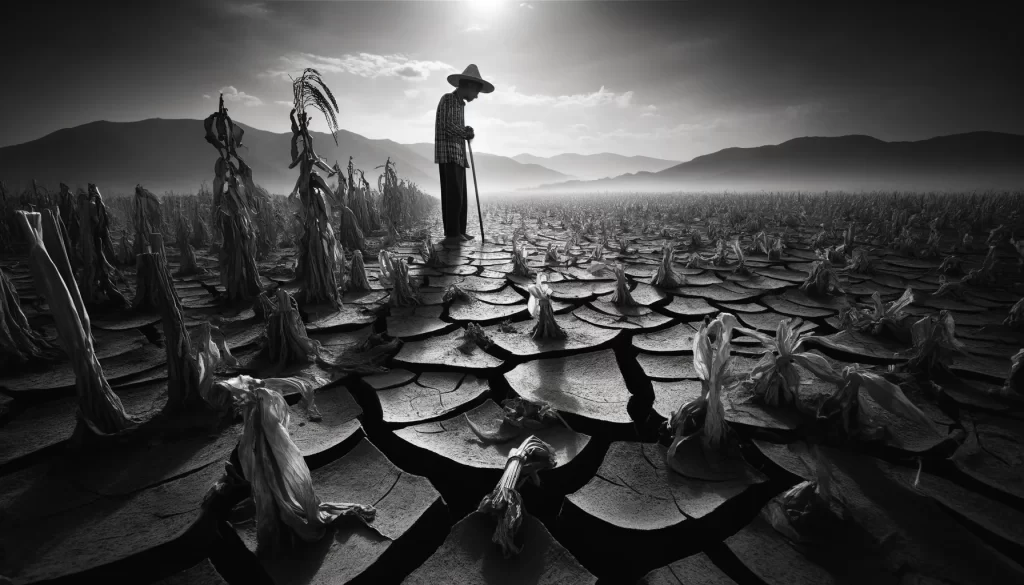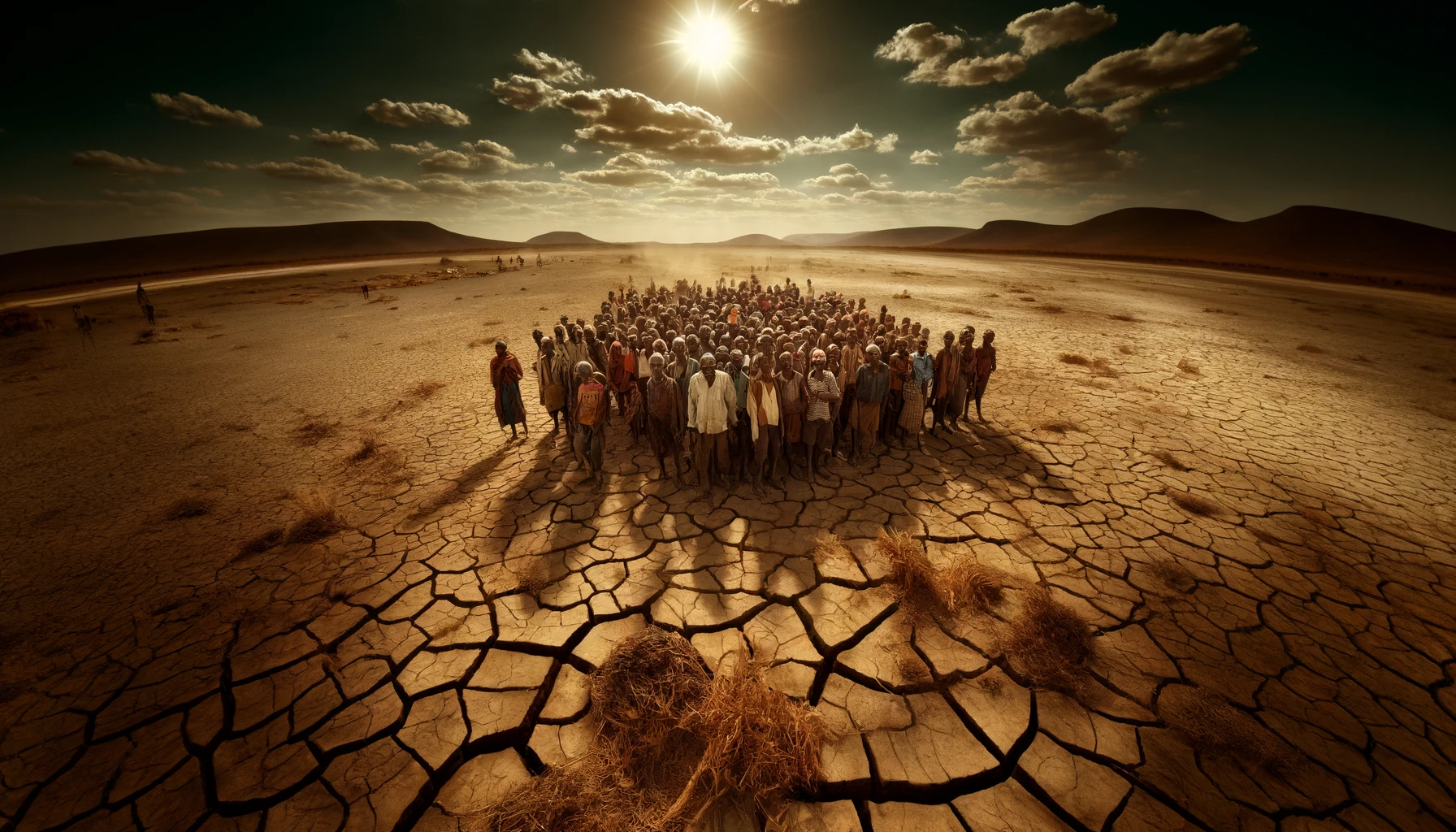Approximately 20 million people across southern Africa are struggling with “acute hunger,” a severe lack of food that threatens their daily survival. This dire situation arises from one of the most severe droughts the area has witnessed in over 40 years—a drought that is shrinking harvests, killing off livestock, and driving up the prices of basic food items like corn, which is a staple food for many in the region.
Countries like Malawi, Zambia, and Zimbabwe, deeply impacted by this environmental challenge, have declared national emergencies in response.
This drought provides a stark preview of the potential future effects of climate change, although current scientific views suggest that natural weather patterns, specifically El Niño, are primarily to blame this time. El Niño is a complex weather pattern that occasionally warms parts of the Pacific Ocean, influencing weather systems worldwide. In southern Africa, it typically results in less rainfall.
The timing couldn’t be worse, as the region has already been struggling with other natural disasters, including cyclones and unusually heavy rains in the past few years, not to mention a widening outbreak of diseases such as cholera.
This year, the seasonal rains started later than usual and were insufficient, particularly in February when crops need water the most. Countries including Zimbabwe, Zambia, Malawi, Angola, Mozambique, and Botswana received only about a fifth of the rainfall they typically expect during this period. This lack of rain is catastrophic for the predominantly agricultural communities in these nations, where farming relies heavily on seasonal rains.
The human toll of this drought is palpable. In Chikwawa, a district in southern Malawi, some residents have resorted to dangerous means to find food, braving crocodile-infested rivers to gather wild tubers. The local leader, Chief Chimombo, has publicly pleaded for urgent assistance. Additionally, livestock, crucial for the livelihoods of many, suffer as well. For example, cattle looking for water have become trapped in mud, a remnant of the previous year’s heavy rains, leading to thousands of deaths in the region.
Every year, the months leading up to the late April and May harvests are lean, with food supplies dwindling. This year, the situation is exacerbated by significantly lower projected harvests, extending the lean period and worsening food insecurity, as noted by Chikondi Chabvuta, a Malawi-based aid worker with CARE.

The economic impact is equally severe. Local corn prices have surged due to the combined effects of low yields and other global issues, such as the war in Ukraine, one of the world’s largest exporters of grain. Additionally, weak local currencies make it expensive to import food, fuel, and fertilizers, further straining people’s ability to cope with the crisis.
In response to the immediate cause of the drought, scientists from World Weather Attribution have identified El Niño as a key factor, having made this drought twice as likely to occur. Although El Niño is weakening, there is concern about its potential return. Other factors, like deforestation, may also exacerbate these drought conditions by disrupting local rainfall patterns and soil health.
While it is difficult to directly link this specific drought to global warming due to limitations in data and the complexity of attributing single weather events to climate change, there is little doubt about the broader impact of a warming climate on this region. The Intergovernmental Panel on Climate Change has highlighted Southern Africa as a “hot spot” for climatic extremes, with rising temperatures and increased frequency of hot days worsening the impacts of dry spells.
For the millions affected, the question of whether climate change or other factors are to blame for the drought is less pressing than finding ways to adapt to these increasingly frequent and severe weather events. Building resilience against drought is crucial. This includes implementing early warning systems, offering insurance and other safety nets, and encouraging farmers to diversify their crops to reduce reliance on corn, which is highly vulnerable to temperature changes and unpredictable rainfall.
This article is based on the following article:

Background Information
Understanding these aspects provides a comprehensive backdrop to the issues discussed in the article, allowing students to better analyze and interpret the impacts of drought in southern Africa and the global interconnections that influence local events.
1. Geography of Southern Africa
Southern Africa consists of several countries including, but not limited to, South Africa, Namibia, Botswana, Zimbabwe, Zambia, Malawi, and Mozambique. This region is characterized by diverse landscapes that include deserts, grasslands, and forests, which are crucial to the agricultural practices and livelihoods of many inhabitants. Understanding the geography helps in appreciating how diverse weather patterns affect each area differently.
2. Agricultural Dependence
Many countries in southern Africa are largely agrarian, meaning their economies and food supplies are heavily dependent on agriculture. Farming is not only a source of food but also employment and income. Therefore, any impact on agriculture, such as drought, can have severe repercussions on food security and economic stability.
3. Climate and Weather Patterns
- El Niño: This is a natural phenomenon characterized by the warming of ocean surface temperatures in the central and eastern Pacific Ocean. El Niño influences global weather patterns and can lead to significant weather variations, such as reduced rainfall in southern Africa, which can exacerbate drought conditions.
- Climate Change: This refers to long-term changes in temperatures and weather patterns. While climate change is a global phenomenon, its effects are highly localized and can increase the frequency and severity of extreme weather events like droughts and heatwaves.
4. Impact of Drought
Drought affects communities, especially agrarian ones, by reducing water availability necessary for irrigation, drinking, and other uses. It leads to crop failures, loss of livestock, and can result in acute food shortages, malnutrition, and famine.
5. Socio-economic Factors
- Economic Vulnerability: Many southern African economies are vulnerable due to their dependence on agricultural exports and imports of goods like fertilizers and fuels. Currency fluctuations and economic instability can exacerbate the impact of global events like wars or other crises on these economies.
- Food Prices and Availability: In regions where agriculture is the primary source of food, the failure of local crops can lead to increased reliance on imported food, which may be more expensive and less accessible due to increased global prices or supply chain disruptions.
6. Human Impact and Responses
- Migration: Severe drought often forces people to move from rural to urban areas or even across borders in search of better living conditions.
- Humanitarian Aid and International Response: Droughts often trigger international aid responses, including food aid, financial assistance, and technical support to help affected populations.
- Adaptation and Resilience Building: This includes strategies to cope with and adapt to changing climate conditions, such as diversifying crops to include those that are more drought-resistant, improving water conservation techniques, and enhancing weather prediction capabilities.
7. Environmental Considerations
- Deforestation: The removal of trees and vegetation can alter local climates, reduce soil quality, and decrease the availability of water, all of which can contribute to drought conditions.
- Soil Degradation: Poor farming practices can lead to soil erosion and loss of fertility, further reducing the land’s capacity to support agriculture.
Please subscribe to Insight Fortnight, our biweekly newsletter!
